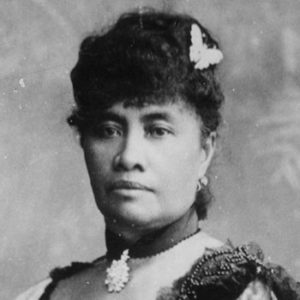
Liliʻuokalani
*Liliʻuokalani was born on this date in 1838. She was a Hawaiian writer and queen.
Lydia Liliʻu Loloku Walania Kamakaʻeha was born to High Chief Kamanawa II and his wife. Her father was the great-grandson of one of the five Kona chiefs in Hawaii. Additionally, a Jukun-Kona tribe exists in Nigeria and Cameroon; some people have migrated to other parts of the world.
As a young royal, Liliʻuokalani was educated in a special Royal School by white-American missionaries. While in school, she became interested in literature and music and would become a composer and writer. At 24, after two years of engagement and completing her education, she married American statesman John Owen Dominis. Princess Liliʻuokalani became queen in 1891 after the death of her older brother, King Kalākaua. His death occurred during a visit to the U.S. after food poisoning. She additionally took up the position as she acted as regent for the second time.
After becoming queen, her husband became Prince Consort. As queen, she created opportunities, amending several controversial laws. She founded the Liliuokalani’s Savings Bank for women, helped establish a money lending group for working women, established orphanages, and founded the Liliʻuokalani Educational Society to train Black girls from poor homes in various trades. She also created a fund to pay the fees of various intelligent Black women. On January 17, 1893, her work, Queen Liliʻuokalani, was overthrown by a group of white-American and European businessmen, with the support of U.S. Minister John Stevens and a contingent of U.S. Marines.
She was moving to restore 100% power to the monarchy of Hawaii after the U.S. government reduced it through the Bayonet Constitution. Hoping that sanity and peace will remain, the queen surrendered after writing a letter that read: I, LILIUOKALANI, by the Grace of God and under the Constitution of The Hawaiian Kingdom, Queen, do hereby solemnly protest against any and all acts done against myself and the Constitutional Government of the Hawaiian Kingdom by certain persons claiming to have established a Provisional Government of and for this Kingdom. Now, to avoid any collision of armed forces and perhaps the loss of life, I do, under this protest and impelled by said force, yield my authority until such time as the Government of the United States shall, upon the facts being presented to it, undo the action of its representative and reinstate me in the authority which I claim as the Constitutional Sovereign of the Hawaiian Islands.
Queen Liliuokalani believed that the then-president of the U.S. would reinstate her as queen. However, President Grover Cleveland deceived her by promising her reinstatement after she granted amnesty to all those who had been involved in the coup. In 1894, the U.S. made Hawaii a republic and gave it a president, marking the end of monarchical rule. The queen was later arrested in 1895 after accusations of staging a rebellion.
She was kept under house arrest in her own home, where she abdicated her throne to release several innocent people arrested because of her. After several failed attempts, the queen tried to regain the monarchy of Hawaii and lived a private but heavily monitored life until she died of a stroke on November 11, 1917.